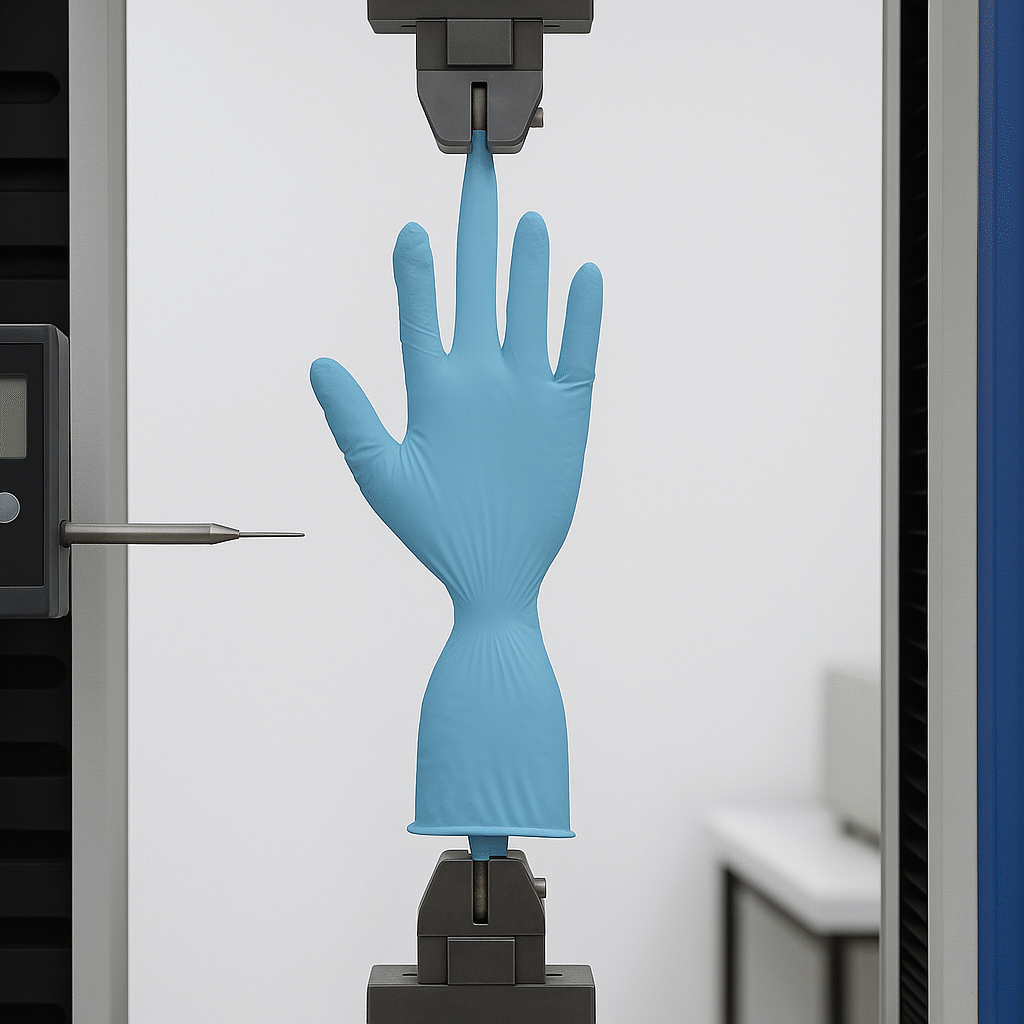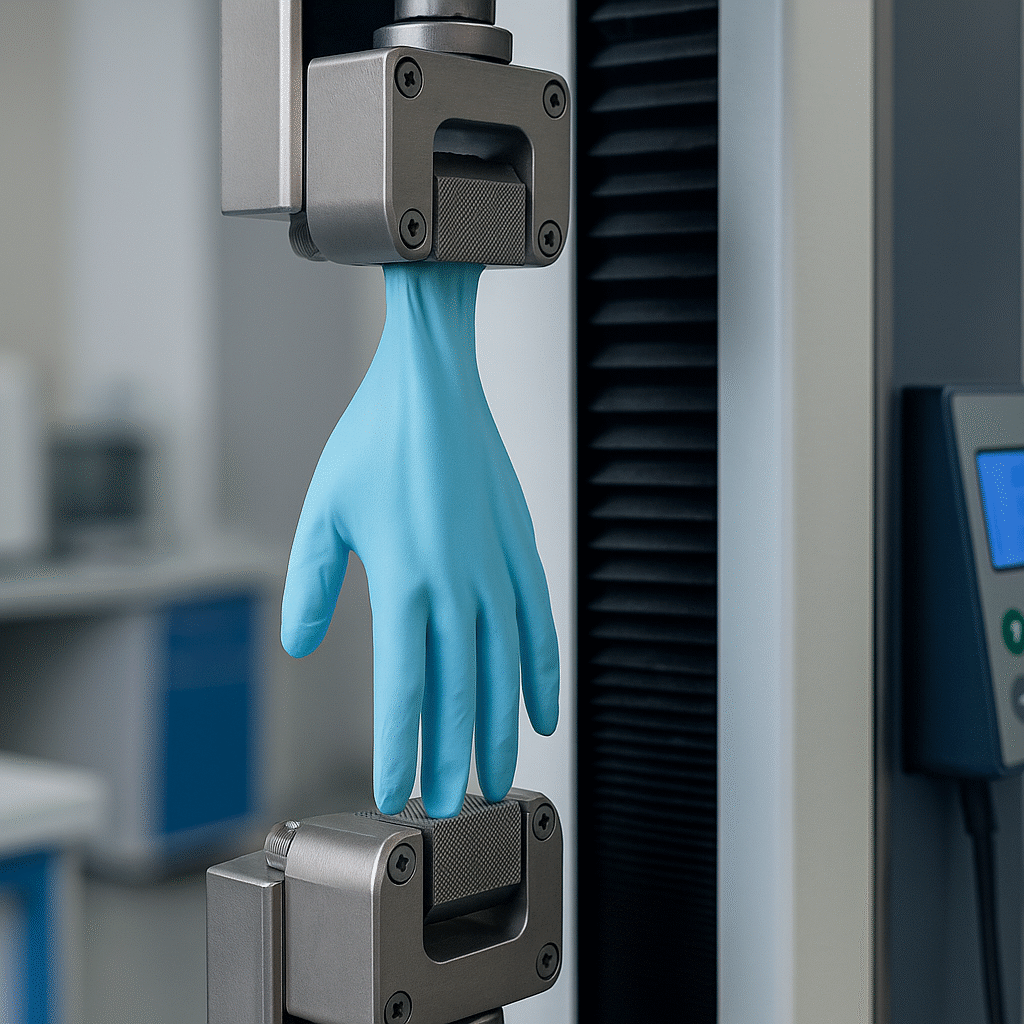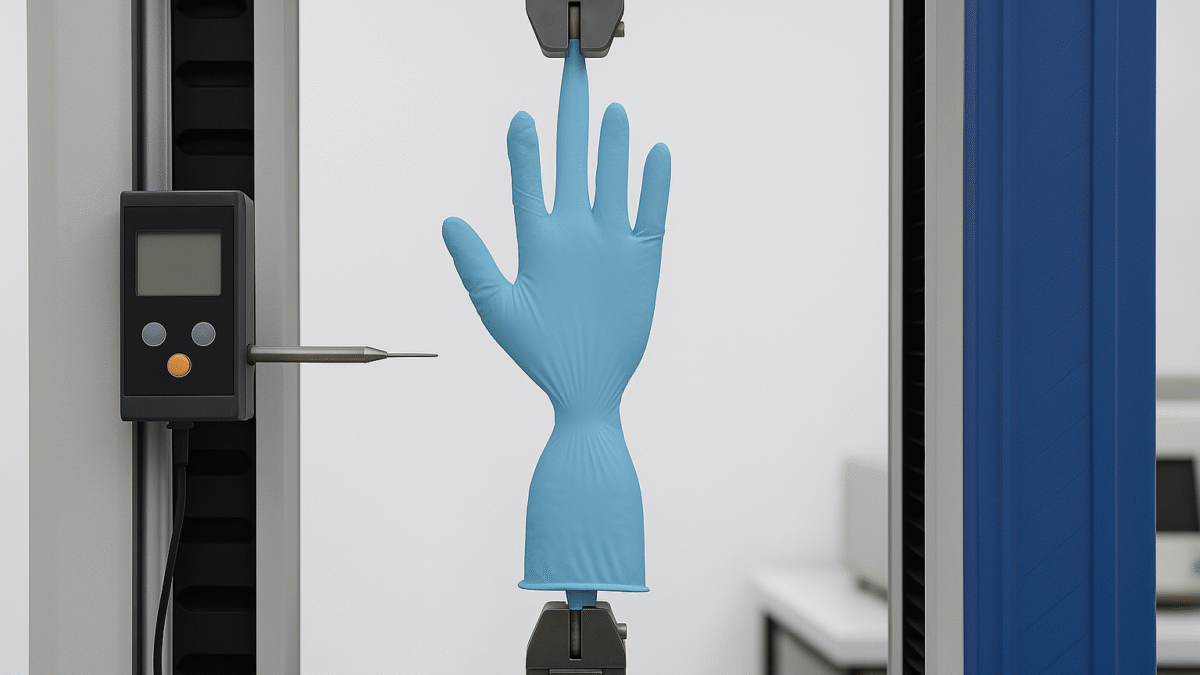Glove Tensile Strength Testingur Business
Glove Performance: The Science Behind Tensile Strength Testing at Kiyo R&D Center & Laboratory
Introduction
- When it comes to personal protective equipment (PPE), gloves are one of the most critical items. Whether used in medical settings, industrial environments, or laboratories, gloves must perform under pressure — literally. At Kiyo R&D Center & Laboratory, we help manufacturers and quality professionals ensure this performance through rigorous glove tensile strength testing.

Why Is Tensile Strength Testing Critical?
Gloves face constant mechanical stress — from donning and removal to stretching and gripping. Tensile strength defines a glove’s ability to endure such stress without tearing. Inadequate tensile properties can lead to glove failure, compromising user safety and violating industry standards.
Standards That Govern Tensile Strength
To ensure consistency and reliability, Kiyo R&D Center & Laboratory performs tensile testing in accordance with internationally recognized standards:
ASTM D412: This standard evaluates the tensile properties of rubber and elastomeric materials, making it ideal for general-purpose gloves.
ASTM D6319: Specifically designed for nitrile examination gloves, this standard outlines mechanical and physical property requirements for medical-grade products.
These tests aren’t just formalities—they are essential checkpoints in a glove’s journey from design to deployment.
Our Testing Process: From Glove to Data
Kiyo R&D Center & Laboratory follows a meticulous multi-step procedure:
- Conditioning: Gloves are stabilized under controlled temperature and humidity to eliminate environmental bias.
- Specimen Cutting: Using ASTM-approved dies, we cut glove material into precise dumbbell or ring shapes.
- Mechanical Testing: Our advanced universal testing machines apply controlled tensile loads until the glove fails.
- Data Capture: Real-time stress-strain data is collected, analyzed, and benchmarked against required specifications.
Key Parameters Measured
During testing, we evaluate:
Tensile Strength (MPa): The peak stress the material withstands before failure.
Elongation at Break (%): How much the glove stretches before it snaps.
Modulus at Defined Strains: How resistant the glove is to stretching at various intervals (100%, 200%).
These metrics provide a clear fingerprint of material quality and consistency.
The Kiyo Advantage in Glove Testing
At Kiyo R&D Center & Laboratory, we combine high-precision equipment with expert knowledge to deliver unmatched testing accuracy. Our services are:
Standard-Compliant: Adhering to ASTM and ISO protocols.
Data-Driven: Delivering comprehensive, easy-to-interpret reports.
Efficient: Capable of high-throughput analysis for large production runs.
Customizable: Tailored solutions for unique glove materials and applications.
We support businesses across medical, pharmaceutical, automotive, and manufacturing sectors, helping them meet product development, regulatory, and quality assurance goals.
From Compliance to Confidence
Tensile strength is more than a number — it’s a guarantee of reliability. It assures end-users that their gloves will perform under real-world conditions. With Kiyo R&D Center & Laboratory as your testing partner, you don’t just meet standards — you exceed expectations.

Conclusion
- For organizations serious about safety, quality, and innovation, glove tensile strength testing at Kiyo R&D Center & Laboratory offers the perfect blend of scientific precision and regulatory insight. Let us help you ensure every glove performs to the highest standard.

